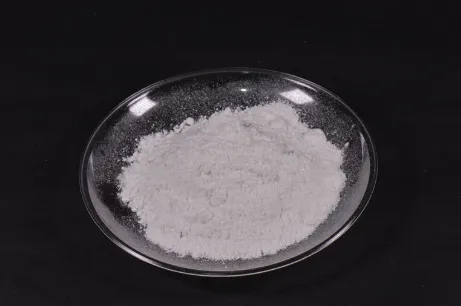Sustainable Alternatives to Traditional Mica Pigments
As demand for eco-friendly and sustainable products continues to grow, industries like cosmetics, art, and crafts are increasingly seeking alternatives to traditional mica pearlescent pigments. Pearlescent mica powder has long been valued for its shimmering effects, but concerns over mining practices and environmental impact have prompted the exploration of synthetic or plant-based substitutes. This article delves into the rise of these alternatives and their potential benefits.

Synthetic Mica Pigments: A Modern Alternative
Synthetic mica pearlescent pigments offer a sustainable option for those looking to avoid the environmental consequences associated with mica mining. While natural mica powder has unique qualities, synthetic alternatives can mimic its shimmering, translucent effects without relying on mined materials.
Manufacturing Process:
Synthetic mica is created through a process of crystallization, where minerals like alumina and silica are combined to form a structure resembling natural mica. This allows for more control over the quality, size, and shape of the pigments.
Advantages:
Synthetic mica pigments are often more consistent in their appearance and performance. They offer the same bright, reflective qualities as their natural counterparts while avoiding the ethical and environmental issues tied to mica mining.
Sustainability:
Synthetic mica can be made without exploiting natural resources, and manufacturers can ensure the material is responsibly produced. These pigments are a part of the growing movement toward sustainable and non-toxic beauty products.
Plant-Based Pigments: A Green Solution for Pearlescence
In addition to synthetic mica pigments, plant-based alternatives are also gaining attention. Derived from organic sources, these pearl pigments are another step toward creating eco-friendly formulations that align with natural and organic product standards.
Natural Sources:
Plant-based pearlescent pigments are made from plants like coconut, corn, or even certain flowers that naturally produce lustrous pigments. These materials are a renewable resource, making them an attractive option for eco-conscious consumers.
Benefits:
Plant-based pigments often offer vibrant colors and reflective qualities, much like traditional pearl pigment. Their biodegradable nature adds an environmental advantage, ensuring that products made with these pigments are less likely to contribute to long-term pollution.
Growing Popularity:
As more beauty brands shift to clean and organic products, plant-based pearl pigments are gaining traction for their non-toxic properties. This makes them ideal for those seeking cruelty-free, sustainable ingredients for cosmetics or craft applications.
Pearl Pigment for Epoxy Resin: Sustainable Alternatives in Crafting
One area where pearl pigment for epoxy resin is commonly used is in crafting, particularly for resin art. With a growing demand for eco-friendly crafting supplies, alternatives to traditional mica are also being explored in this field.
Synthetic Resin Pigments:
Just as synthetic mica is used in cosmetics, synthetic pigments are being developed specifically for use in epoxy resin projects. These pigments provide the same stunning shine and iridescence that natural mica imparts but without the environmental concerns tied to mining.
Bio-Based Pigments:
Some companies are developing bio-based pearl pigments that offer similar effects in resin but are derived from plant or algae sources. These pigments are non-toxic, biodegradable, and eco-friendly, making them an appealing choice for environmentally conscious artisans.
Durability:
When used in epoxy resin, sustainable pigments must still offer durability and long-lasting effects. Many synthetic and plant-based pigments are designed to withstand the curing process of resin and provide consistent results.
Advantages of Choosing Sustainable Mica Alternatives
Opting for synthetic or plant-based mica pearlescent pigments presents several key advantages for both consumers and manufacturers. Beyond environmental impact, these alternatives offer consistent quality, enhanced sustainability, and the ability to meet consumer demand for ethical products.
Reduced Environmental Impact:
Both synthetic and plant-based pigments eliminate the need for resource-depleting mining operations. By switching to these alternatives, brands can make significant strides in reducing their environmental footprint.
Consistency and Customization:
With synthetic alternatives, manufacturers can achieve consistent quality, colors, and effects. This ensures a higher degree of control over the product's final appearance, whether in cosmetics or crafting materials.
Consumer Appeal:
Sustainability is increasingly important to today’s consumers. By incorporating these eco-friendly alternatives into products, brands can attract a loyal customer base that values ethical sourcing and sustainable practices.
The rise of synthetic mica pearlescent pigments and plant-based pearl pigment options marks an exciting shift in various industries. These sustainable alternatives offer the same dazzling effects as traditional mica but without the environmental and ethical issues tied to mining. As consumers become more conscious of their choices, the demand for these eco-friendly options is likely to continue growing, further shaping the future of beauty, crafting, and other industries reliant on pigment technology.
If you’re looking to make a switch to sustainable pearlescent mica powder or plant-based alternatives, now is the time to explore these eco-friendly options. Make the ethical choice and help contribute to a cleaner, greener world while still enjoying the shimmering beauty of quality pigments.
-
Packaging and Storage Tips for Synthetic FluorphlogopiteNewsJul.31,2025
-
Market Trends of Fluorophlogopite-based ProductsNewsJul.31,2025
-
Key Features of Reliable Mica ManufacturersNewsJul.31,2025
-
How to Select the Best Mica Powder for Skin ProductsNewsJul.31,2025
-
Common Mica Types in Mica Wholesale MarketsNewsJul.31,2025
-
Applications of Synthetic Mica Pigments in CosmeticsNewsJul.31,2025
Products categories









